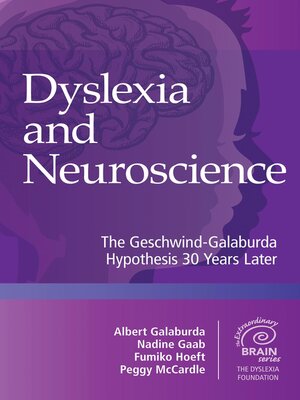Dyslexia and Neuroscience
ebook ∣ The Geschwind-Galaburda Hypothesis 30 Years Later · Extraordinary Brain
By Albert M. Galaburda

Sign up to save your library
With an OverDrive account, you can save your favorite libraries for at-a-glance information about availability. Find out more about OverDrive accounts.
Find this title in Libby, the library reading app by OverDrive.



Search for a digital library with this title
Title found at these libraries:
| Library Name | Distance |
|---|---|
| Loading... |
Thirty years ago, the groundbreaking Geschwind-Galaburda hypothesis defined the field of dyslexia, revealing and analyzing the complex associations among brain development, hormones, immune activity, and brain lateralization. This important volume revisits the hypothesis three decades later and explores key questions: What have we learned since then, and what still needs to be investigated?
Based on presentations from the 2016 Extraordinary Brain Symposium—and co-edited by one of the authors of the original hypothesis—this book synthesizes current dyslexia findings from more than 30 top researchers and practitioners. The contributors share diverse perspectives, concerns, challenges, and solutions, with brief jargon-free summaries at the beginning of each chapter to make the book accessible to a wider audience. Each chapter also points to research gaps and remaining questions to help shape future innovations from the next generation of researchers. A landmark addition to the literature on dyslexia and neuroscience, this forward-thinking volume should be on the shelf of every researcher and graduate student whose work focuses on neuroscience and dyslexia.
EXPLORE CURRENT FINDINGS ONWith contributions by







